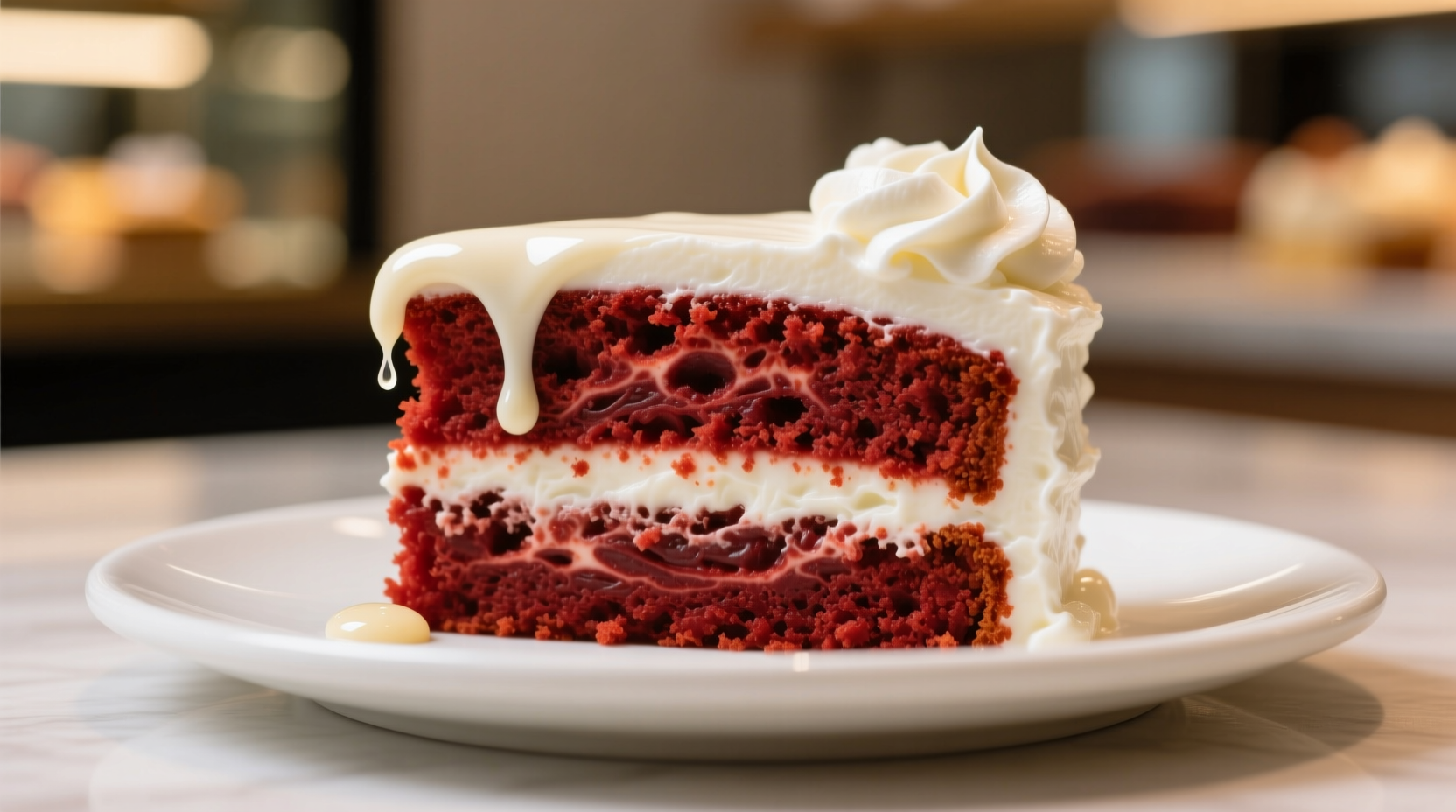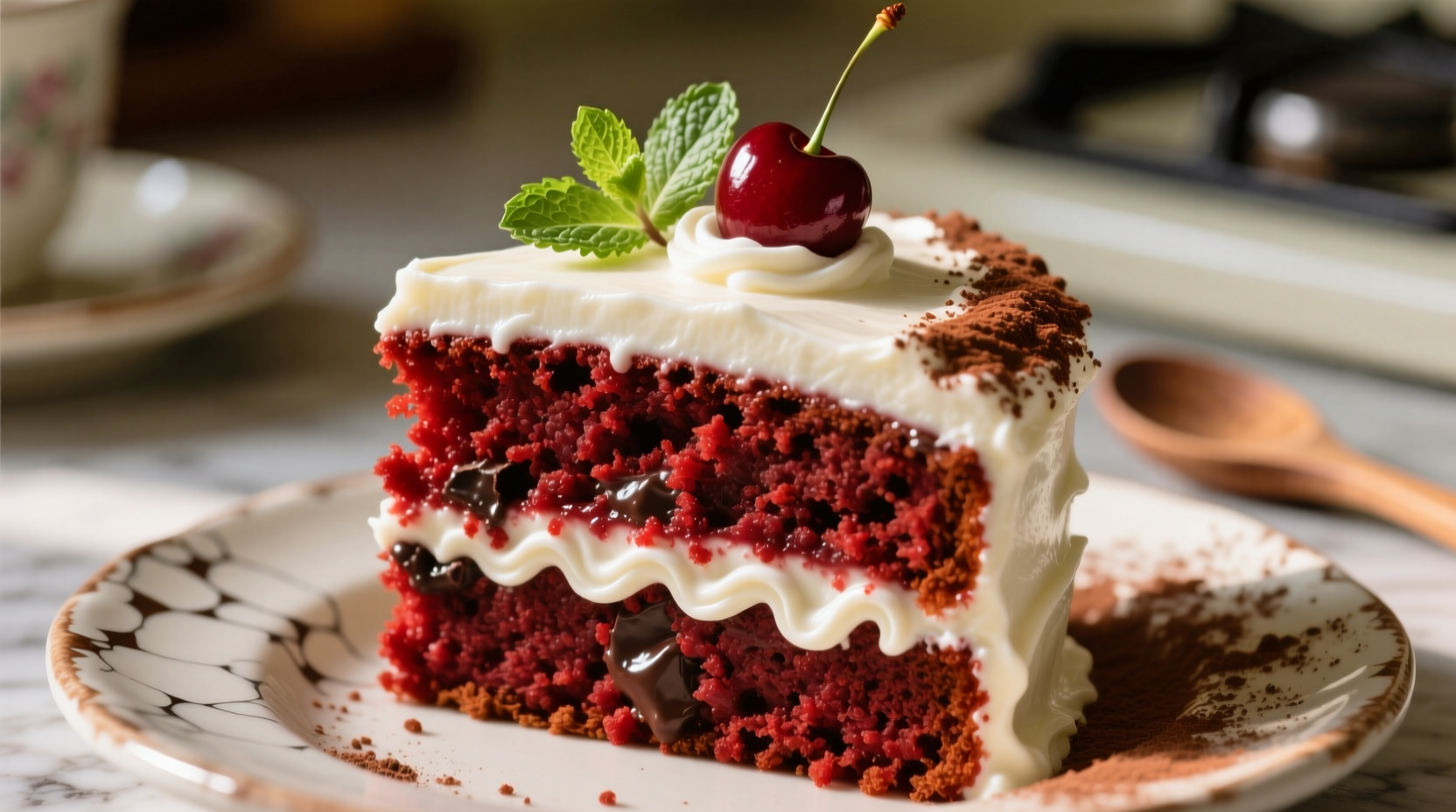The Distinctive Flavor Profile of Red Velvet Cake
When you take your first bite of authentic red velvet cake, you'll notice a delicate balance of flavors that sets it apart from other desserts. Unlike dense chocolate cakes, red velvet offers a lighter cocoa presence—think of it as chocolate's sophisticated cousin who prefers subtle elegance over bold statements. The buttermilk and vinegar in the recipe create a gentle tang that cuts through the sweetness, while the hint of cocoa provides just enough chocolate essence without overwhelming the palate.

Breaking Down the Taste Components
Understanding what gives red velvet cake its signature taste requires examining each element of this culinary masterpiece. The magic happens through careful ingredient balancing:
Buttermilk's Tangy Contribution
Buttermilk isn't just for texture—it's a flavor catalyst. The lactic acid in buttermilk reacts with cocoa's natural acids, creating complex flavor compounds that wouldn't develop in a standard cake. Food scientists at the University of Georgia's Department of Food Science confirm that this acid-cocoa interaction produces subtle flavor notes reminiscent of fermented cocoa beans, adding depth without bitterness (University of Georgia Food Science).
Cocoa's Supporting Role
Contrary to popular belief, red velvet cake isn't primarily a chocolate dessert. Most traditional recipes use just 2-3 tablespoons of cocoa powder—enough to provide color and a whisper of chocolate flavor, but not enough to dominate. This restrained approach creates what baking experts call "chocolate adjacency"—a flavor profile that suggests chocolate without committing to it fully.
The Cream Cheese Frosting Factor
The frosting isn't just decoration—it's essential to the complete flavor experience. The tangy-sweet profile of cream cheese frosting creates a flavor contrast that defines red velvet cake. When the slightly acidic cake meets the rich frosting, your taste buds experience what food chemists describe as "flavor layering," where multiple taste sensations unfold sequentially rather than hitting all at once.
Debunking Common Flavor Myths
Several misconceptions cloud understanding of red velvet cake's true flavor profile. Let's separate fact from fiction:
| Myth | Reality | Flavor Impact |
|---|---|---|
| "It's just chocolate cake with red dye" | Traditional recipes use minimal cocoa with specific acid ingredients | Creates distinctive mild chocolate-tang profile rather than deep chocolate |
| "The red color changes the taste" | Natural color came from cocoa reaction; modern dye has negligible flavor | Food coloring contributes less than 0.5% to overall flavor profile |
| "It tastes artificial" | Authentic versions use natural ingredients; artificial versions exist | Homemade versions show complex flavor notes; commercial versions may taste one-dimensional |
How Ingredients Create the Signature Taste
The distinctive flavor of red velvet cake emerges from precise chemical interactions between ingredients. When buttermilk (pH 4.4-4.8) meets vinegar (pH 2.5-3.5), they create an acidic environment that transforms the cocoa powder's flavor compounds. This process, documented in The Science of Baking by Michelle McGlinn, produces subtle flavor notes that wouldn't exist in a neutral-pH chocolate cake.
The small amount of cocoa used—typically just 2-3 tablespoons per cake—serves primarily as a flavor enhancer rather than the dominant taste. This restrained approach creates what professional bakers call "chocolate adjacency," where the cake suggests chocolate without committing to it fully. The buttermilk's lactic acid interacts with the cocoa's natural acids to create complex flavor compounds that develop during baking.
Texture's Role in Flavor Perception
Red velvet cake's flavor experience extends beyond pure taste to include texture elements that influence how we perceive flavor. The buttermilk-vinegar reaction creates a uniquely fine crumb structure that's both moist and light—never dense like chocolate cake nor as airy as sponge cake.
This texture allows the subtle flavors to unfold gradually on your palate. Food texture studies from the Sensory Science Center at Kansas State University show that cake crumb structure directly impacts flavor release rates—red velvet's medium-fine crumb delivers flavor compounds more gradually than denser chocolate cakes (Sensory Science Center).
Regional Variations and Their Flavor Differences
Red velvet cake has evolved differently across regions, creating distinct flavor interpretations:
- Traditional Southern version: Uses buttermilk, vinegar, and minimal cocoa for a delicate flavor with pronounced tang
- Modern commercial version: Often includes more cocoa and artificial flavoring, creating a stronger chocolate profile
- Caribbean interpretation: Incorporates spices like nutmeg and allspice, adding warmth to the flavor profile
- European adaptation: Typically reduces acidity and increases cocoa, moving closer to a chocolate-vanilla hybrid
These variations demonstrate how context affects flavor expectations. What tastes "authentic" in Mississippi might seem too tangy in Paris, where red velvet has been adapted to local palates through the addition of European-style vanilla and reduced acidity.
When Red Velvet Cake Tastes 'Off'
Certain conditions can significantly alter red velvet cake's intended flavor profile. Understanding these limitations helps set proper expectations:
- Excessive food coloring: More than 2 ounces of liquid dye can impart a slight chemical aftertaste
- Ingredient substitutions: Replacing buttermilk with regular milk eliminates the characteristic tang
- Storage conditions: Refrigeration can mute subtle flavors; room temperature storage preserves complexity
- Frosting imbalance: Overly sweet frosting overwhelms the cake's delicate flavor balance
Professional bakers note that the ideal flavor window for red velvet cake is 24-48 hours after baking. During this period, the flavors meld and mature, creating what pastry chefs call "flavor harmony"—when all elements work together rather than competing for attention.
Perfect Pairings to Enhance the Experience
Certain beverages and accompaniments can elevate red velvet cake's flavor profile:
- Coffee: A medium roast with chocolate notes complements without overwhelming
- Tea: Earl Grey's bergamot adds a citrus counterpoint to the tangy cake
- Milk: Whole milk's fat content balances the cake's acidity
- Wine: A light Pinot Noir bridges the gap between the cake's cocoa notes and sweetness
For special occasions, consider serving red velvet cake slightly chilled (not refrigerated) to enhance the cream cheese frosting's texture while preserving the cake's delicate flavor balance. The ideal serving temperature—62-65°F—allows all flavor components to express themselves fully.
Frequently Asked Questions
Why doesn't red velvet cake taste strongly of chocolate?
Traditional red velvet recipes use minimal cocoa powder—typically just 2-3 tablespoons per cake—which provides color and a subtle chocolate essence without dominating the flavor profile. The buttermilk and vinegar create a tangy foundation that balances the mild cocoa notes.
Does the red food coloring affect the taste?
In traditional recipes, the red color came from a chemical reaction between natural cocoa and acid ingredients. Modern food coloring contributes negligible flavor—less than 0.5% to the overall taste profile when used in standard amounts (1-2 ounces per cake).
How is red velvet different from chocolate cake?
Red velvet uses significantly less cocoa than chocolate cake, incorporates buttermilk and vinegar for tanginess, and features a finer crumb structure. Chocolate cake delivers bold, rich cocoa flavor throughout, while red velvet offers a more complex interplay of mild chocolate, tang, and sweetness.
Why does my red velvet cake taste sour?
Authentic red velvet has a noticeable tang from buttermilk and vinegar, but shouldn't taste sour. Excessive vinegar, spoiled buttermilk, or improper ingredient ratios can create unpleasant sourness. The ideal balance should feature a pleasant, subtle tang that complements rather than dominates.
Does red velvet cake taste better the next day?
Yes, like many cakes, red velvet often tastes better after 24 hours. During this time, the flavors meld and mature, creating what professional bakers call "flavor harmony." The buttermilk's tang softens slightly while the cocoa notes become more integrated, resulting in a more balanced overall flavor profile.











 浙公网安备
33010002000092号
浙公网安备
33010002000092号 浙B2-20120091-4
浙B2-20120091-4